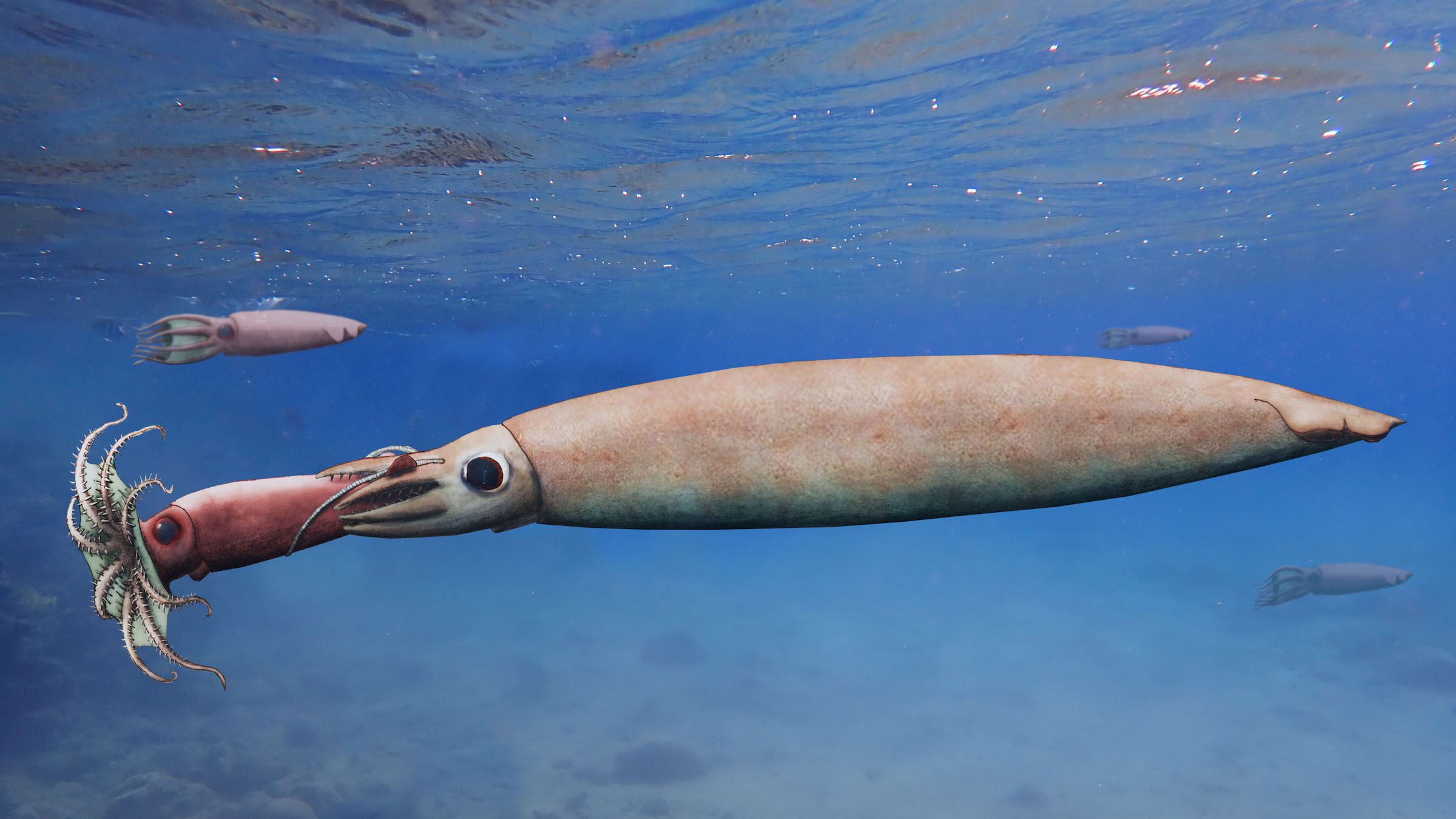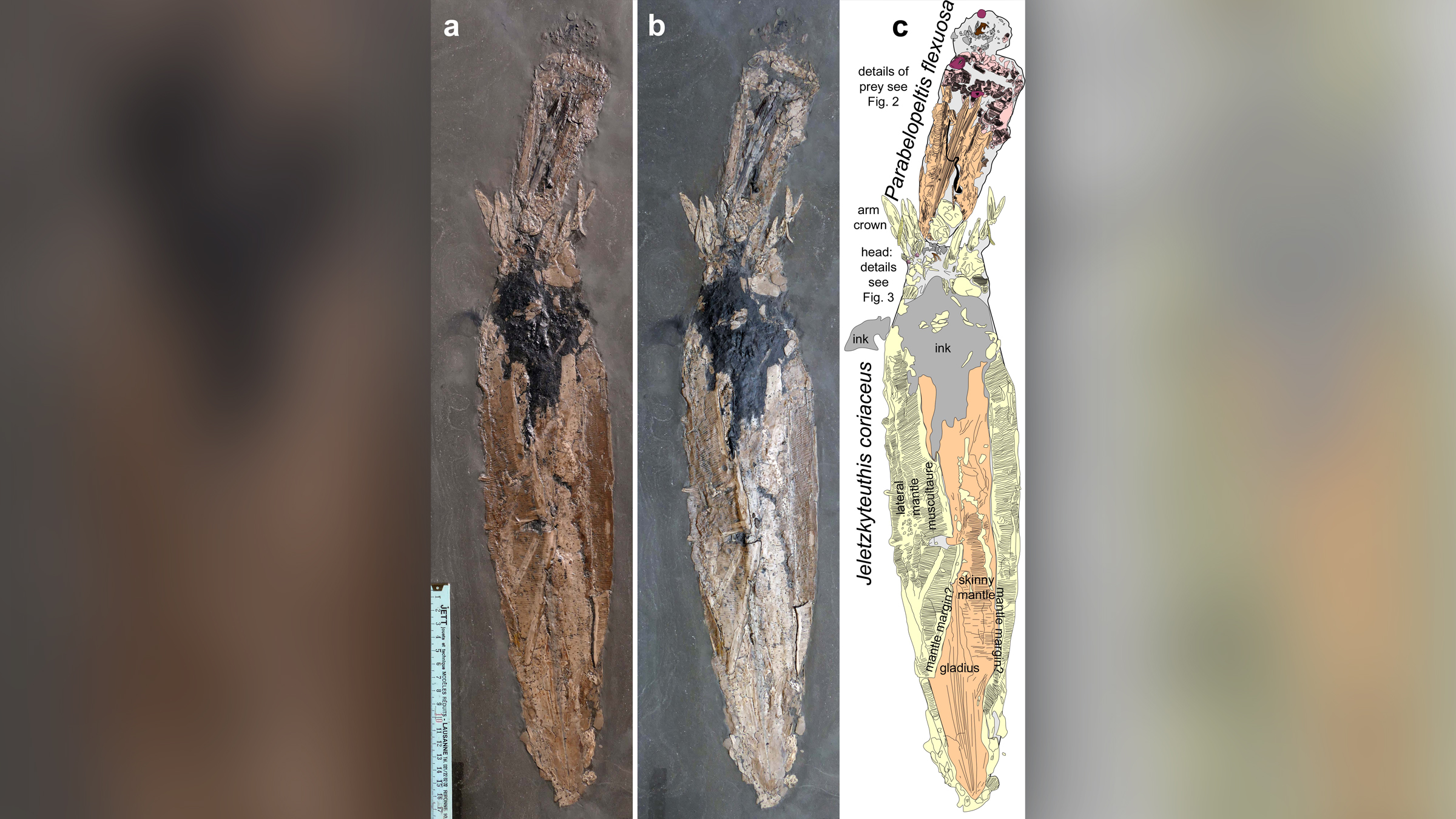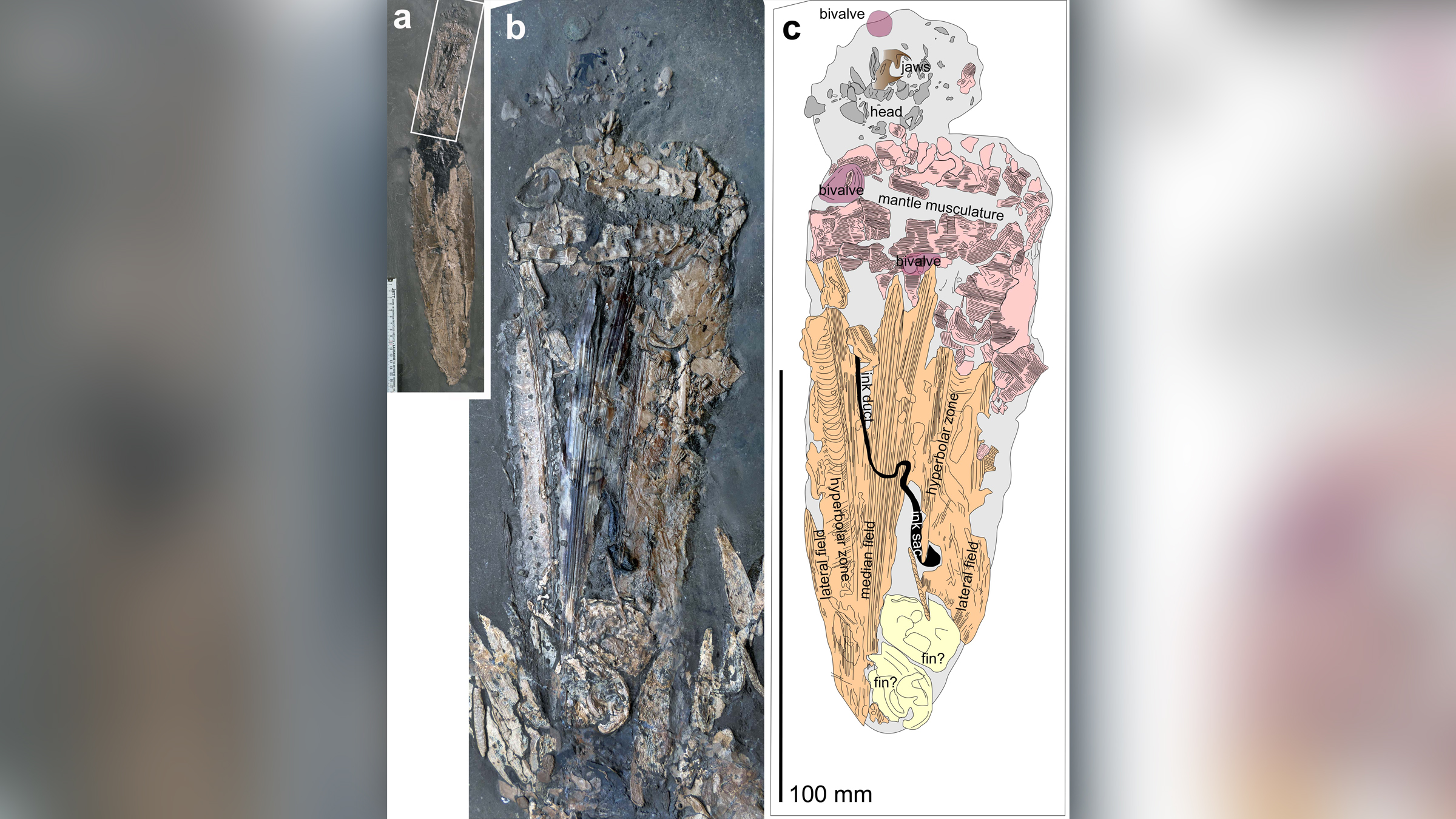Vampire squid ancestor died in 'eternal embrace' with its dinner
The Jurassic predator and prey suffocated together underwater.

About 180 million years ago, an eight-armed predator seized its underwater prey — another eight-armed beastie — and began to nibble on it, until disaster struck and they both died from suffocation, a new study finds.
The shale slab holding this duo's fossilized remains preserved imprints of their soft tissues in "exceptional" detail, the researchers wrote in the study, published online March 16 in the Swiss Journal of Palaeontology. An analysis of the slab reveals that their last moments together ended in an "eternal embrace," the team said.
"We assume that the predator was so happy about its catch that it did not realize that it was sinking," said study first author Christian Klug, a curator at the University of Zurich's Palaeontological Museum and a professor at its Palaeontological Institute. "It probably wound up in the oxygen-poor water layers, suffocated, died and was embedded in the soft mud."
Related: Gallery: Vampire squid from hell
Amateur collector Dieter Weber found the slab holding the imprints in an abandoned quarry opposite a golf club in Ohmden, a municipality in southern Germany. The fossilized creatures on the slab were positioned with the predator's arms enclosed around the smaller prey, he found. After preparing the fossil, Weber sold the piece to one of the researchers, who then donated it to the State Museum of Natural History Stuttgart.
When these creatures were alive during the early Jurassic period, the region was a marine basin that extended across much of Central Europe, and "the bottom waters were often poor in oxygen," Klug told Live Science in an email.

Both of the ancient creatures are members of Octobrachia, a group of eight-armed cephalopods that includes the octopus, argonaut (deep-sea shelled octopus also known as the paper nautilus) and vampire squid — an animal that got its eerie name from its cape-like skin that connects its arms, but is neither a blood-sucker nor a squid. In particular, both of the Jurassic animals are vampyromorphs, ancient relatives of the modern-day vampire squid (Vampyroteuthis infernalis), Klug said.
Get the world’s most fascinating discoveries delivered straight to your inbox.
"The vampyromorphs have eight arms plus — as we also show here — a pair of filaments, which sort of look like thick spaghetti that were cooked for a bit too long," Klug told Live Science in an email. "These filaments are actually used to catch prey."

Today, vampire squid eat detritus, plankton and other small prey. But, as this specimen shows, "obviously, the larger species [of vampyromorph] was quite a predator," Klug said. After analyzing the specimen, the researchers determined that the larger, 18-inch-long (47 cm) octobrachian is probably Jeletzkyteuthis coriacea. The smaller octobrachian is likely Parabelopeltis flexuosa, which at about 6.5 inches (16.7 cm) long, is less than 40% the length of the predator that tried to eat it.
The specimen is evidence that early vampyromorphs "pursued diverse feeding strategies," but were not yet adapted to dealing with low-oxygen zones in the water, like their modern relatives are, the researchers wrote in the study. Today's vampire squid can slowly, opportunistically feed in low-oxygen areas using their retractable filaments, the team said.
However, that low-oxygen area is likely the reason the two Jurassic sea creatures were so pristinely preserved.
"The poor oxygen availability probably further increased the likelihood that the smaller cephalopod stayed in the arm [region], because it was also immobilized by these [low-oxygen] conditions," Klug said. "Also, the low-oxygen conditions kept scavengers away, enabling the preservation of this unlikely fossil."
Originally published on Live Science.

Laura is the managing editor at Live Science. She also runs the archaeology section and the Life's Little Mysteries series. Her work has appeared in The New York Times, Scholastic, Popular Science and Spectrum, a site on autism research. She has won multiple awards from the Society of Professional Journalists and the Washington Newspaper Publishers Association for her reporting at a weekly newspaper near Seattle. Laura holds a bachelor's degree in English literature and psychology from Washington University in St. Louis and a master's degree in science writing from NYU.


